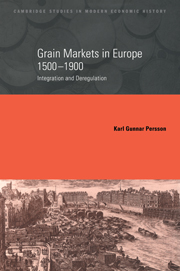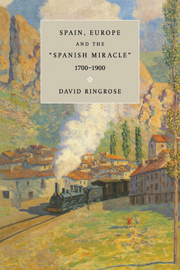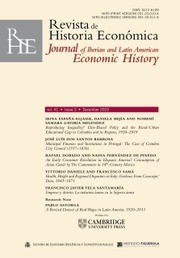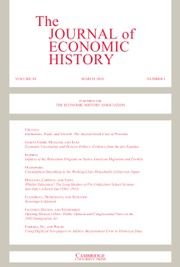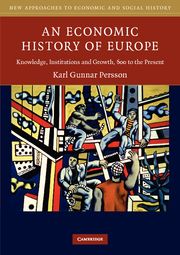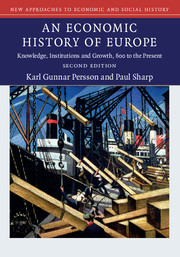Grain Markets in Europe, 1500–1900
Karl Persson surveys a broad sweep of economic history, examining one of the most crucial markets--grain--in order to demonstrate more general points. Grain Markets in Europe traces the markets' early regulation, their poor performance and the frequent market failures. Price volatility caused by harvest shocks was of major concern for central and local government because of the unrest it caused. Persson uses insights from development economics, explores contemporary economic thought on the advantages of free trade, and measures the extent of market integration using the latest econometric methods.
- Focuses on one of the most important markets in the period
- The author is a former president of the European Historical Economics Society
- Combines modern economic methods with a broad historical overview
Reviews & endorsements
"Of ... interest is the author's fruitful incorporation of recent work in welfare economics and price theory, as well as his fresh analysis of French Physiocrats and French and Sweedish deregulation after 1815." Choice
"Persson's book has placed farmers, consumers, agents, and regulators in an impressive analytical framework, and pointed to both the hard economic rationale behind early modern European policy-making and the true impact of its application." International History Review
Product details
January 2000Hardback
9780521650960
194 pages
229 × 152 × 14 mm
0.46kg
1 map 17 tables
Available
Table of Contents
- 1. Bread and enlightenment: the quest for price stability and free trade in 18th-century Europe
- 2. Markets, mortality and human capabilities
- 3. Harvest fluctuations, storage and grain price responses
- 4. Market failures and the regulation of grain markets: a new interpretation
- 5. Market integration and the stabilization of grain prices in Europe 1500–1900
- 6. Authoritarian liberalism and the decline of grain market regulation in Europe 1760–1860.

